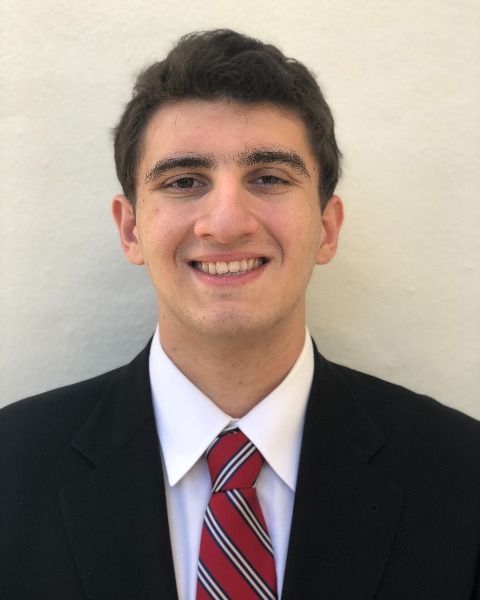Education
Subspecialty Innovation Trends Within Neurosurgery: A 23-Year Analysis of FDA-Approved Medical Devices
Subspecialty Innovation Trends Within Neurosurgery: A 23-year Analysis of Fda-approved Medical Devices

Antony A. Fuleihan, MSE
Medical Student
Thomas Jefferson University
Presenting Author(s)
Introduction: Over the past two decades, neurosurgery has seen a surge in technological advancements. This study evaluates FDA-approved neurosurgical devices from 2000 to 2023 to provide insights into the evolving neurosurgical landscape.
Methods: FDA databases were queried for devices approved by the Neurology and Orthopedic Review Panels between January 1, 2000, and December 31, 2023. Devices were classified by regulatory pathway, product code, and subspecialty (e.g., Spine & Peripheral Nerve, Cerebrovascular & Endovascular, CSF Disorders, etc.). Each device was further categorized by company size (Emerging < 5 devices; Established ≥5 devices) and location (domestic or international). Statistical analyses, including t-tests and ANOVA, evaluated trends over time and across categories.
Results: From 2000 to 2023, the FDA approved 7,873 neurosurgical devices, with 35.1% (n=2,763) in neurosurgery and 64.9% (n=5,110) in orthopedics. Spine & Peripheral Nerve represented the largest category (66.4%; n=5,227), followed by Stereotactic & Functional Neurosurgery (17.5%; n=1,378). Subspecialty growth was strongest in Spine & Peripheral Nerve (+111.6%), Stereotactic & Functional Neurosurgery (+100.5%), Cranial Trauma (+90.9%), and Cerebrovascular & Endovascular (+79.4%), while CSF Disorders and General Cranial Surgery declined by -64.9% and -38.1%, respectively.
Approval times differed significantly across subspecialties (p < 0.01); Spine & Peripheral Nerve devices had the shortest mean approval time (118.9 days, SD=102.4) and General Neurosurgery the longest (159.5 days, SD=130.5). Class 3 devices had the longest mean approval times (488.4 days, SD=329.8) followed by HDE (385.8 days, SD = 278.4), while Class 2 devices were approved more quickly (127.0 days, SD=102.0). PMA devices faced the longest approval durations (584.8 days, SD=323.3) compared to 510(k) devices (126.4 days, SD=100.5) (p < 0.01). Emerging companies and international firms faced longer approval durations compared to established and domestic companies, respectively (p < 0.01).
Conclusion : This analysis of FDA-approved devices over the past two decades reveals distinct patterns of neurosurgical innovation across subspecialties and highlights the impact of company characteristics on approval timelines. These findings provide a framework for understanding current innovation trends and may guide future research and policy within neurosurgical device development.
Methods: FDA databases were queried for devices approved by the Neurology and Orthopedic Review Panels between January 1, 2000, and December 31, 2023. Devices were classified by regulatory pathway, product code, and subspecialty (e.g., Spine & Peripheral Nerve, Cerebrovascular & Endovascular, CSF Disorders, etc.). Each device was further categorized by company size (Emerging < 5 devices; Established ≥5 devices) and location (domestic or international). Statistical analyses, including t-tests and ANOVA, evaluated trends over time and across categories.
Results: From 2000 to 2023, the FDA approved 7,873 neurosurgical devices, with 35.1% (n=2,763) in neurosurgery and 64.9% (n=5,110) in orthopedics. Spine & Peripheral Nerve represented the largest category (66.4%; n=5,227), followed by Stereotactic & Functional Neurosurgery (17.5%; n=1,378). Subspecialty growth was strongest in Spine & Peripheral Nerve (+111.6%), Stereotactic & Functional Neurosurgery (+100.5%), Cranial Trauma (+90.9%), and Cerebrovascular & Endovascular (+79.4%), while CSF Disorders and General Cranial Surgery declined by -64.9% and -38.1%, respectively.
Approval times differed significantly across subspecialties (p < 0.01); Spine & Peripheral Nerve devices had the shortest mean approval time (118.9 days, SD=102.4) and General Neurosurgery the longest (159.5 days, SD=130.5). Class 3 devices had the longest mean approval times (488.4 days, SD=329.8) followed by HDE (385.8 days, SD = 278.4), while Class 2 devices were approved more quickly (127.0 days, SD=102.0). PMA devices faced the longest approval durations (584.8 days, SD=323.3) compared to 510(k) devices (126.4 days, SD=100.5) (p < 0.01). Emerging companies and international firms faced longer approval durations compared to established and domestic companies, respectively (p < 0.01).
Conclusion : This analysis of FDA-approved devices over the past two decades reveals distinct patterns of neurosurgical innovation across subspecialties and highlights the impact of company characteristics on approval timelines. These findings provide a framework for understanding current innovation trends and may guide future research and policy within neurosurgical device development.

.jpg)